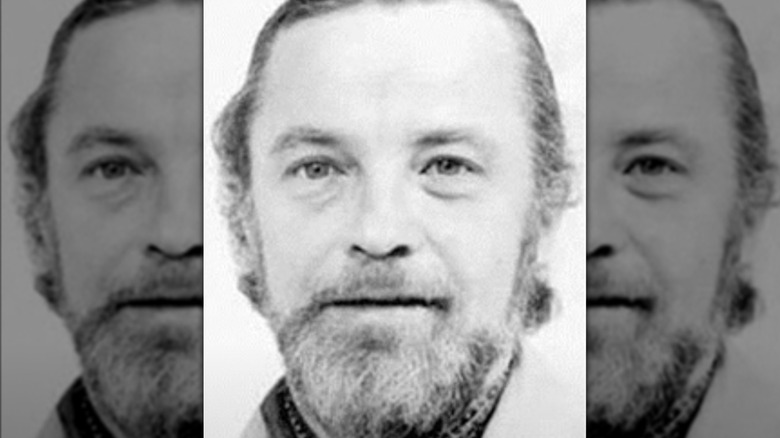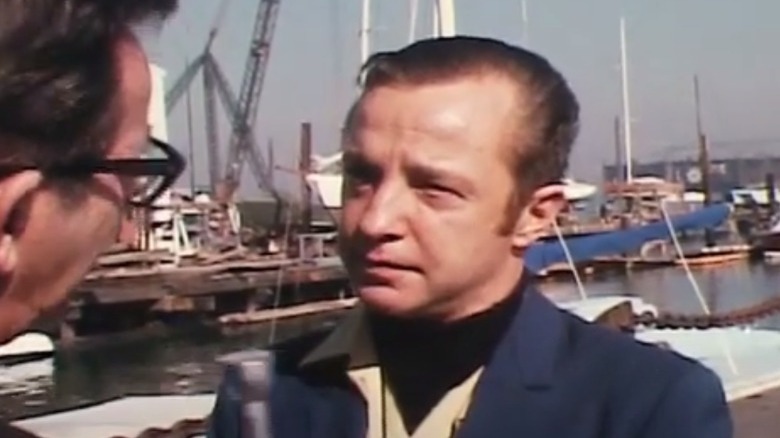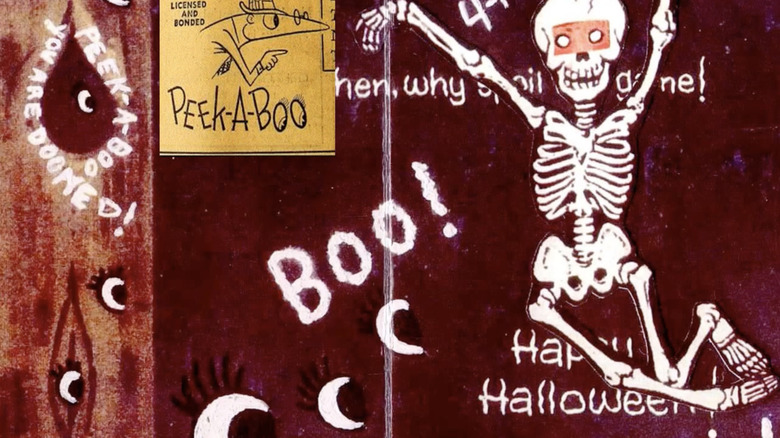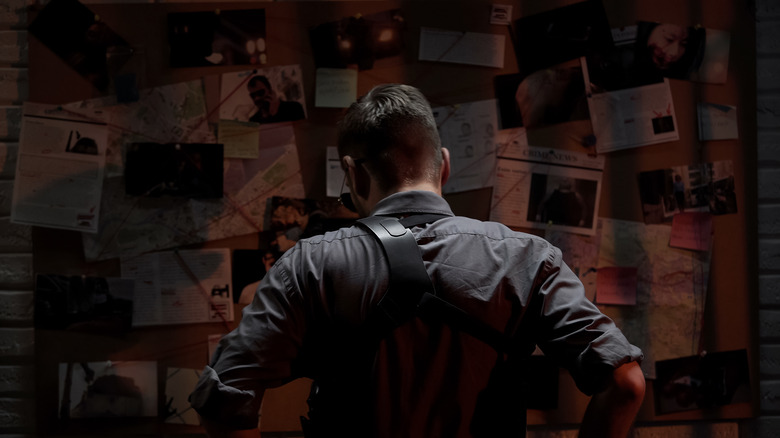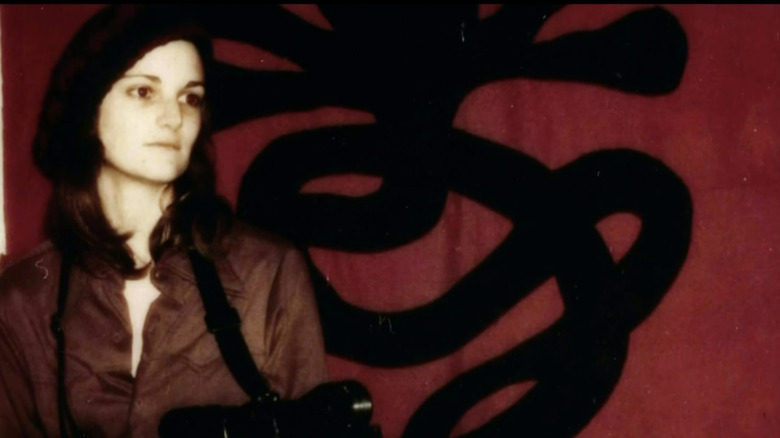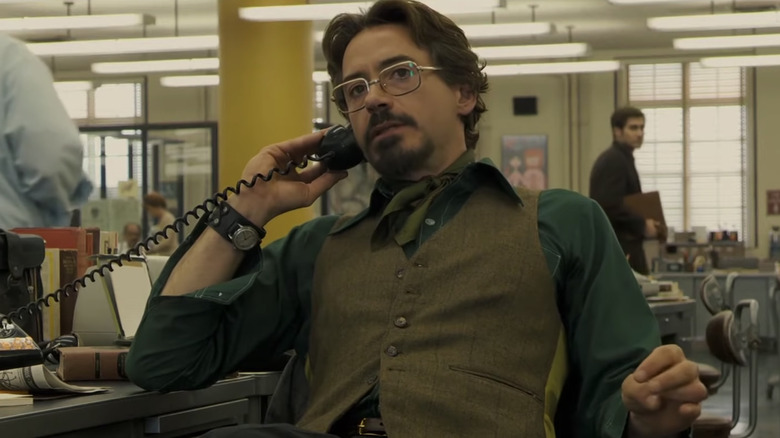The Truth About Paul Avery The Reporter Singled Out By The Zodiac Killer
On December 20, 1968, two teenagers, Betty Lou Jensen and David Arthur Faraday, were parked in Faraday's station wagon on Lake Herman Road just outside of Vallejo, California, when a man approached their car. The two attempted to exit the vehicle and flee but were shot by the mysterious man, killing them both.
On July 31, 1969, three identical letters were mailed to three different news outlets from someone claiming to be the killer behind the December murders. The Vallejo-Times Herald, the San Francisco Examiner, and the San Francisco Chronicle each received a letter demanding a spot in the paper on the afternoon of August 1, 1969, or else more murders would be committed. A 408-character cipher made up of various symbols was split into three parts and included with each letter. The one who wrote the letters and the cipher claimed that his identity would be revealed if solved, according to History.
During this time, journalist Paul Avery (above) was the crime reporter for the San Francisco Chronicle and began reporting on the Zodiac events. Avery was a seasoned journalist and had been working in the field for over a decade by the time the Zodiac Killer came around. The events of the Zodiac shook northern California to its core, and Paul Avery's part in amidst the chaos has become a piece of history.
Paul Avery was a crime reporter for the San Francisco Chronicle
Paul Avery (above, being interviewed in 1970) specialized in covering crime, and he began his career in journalism in 1955, according to Medium, and joined the San Francisco Chronicle in 1959, according to Steve Hodel. That being said, by the time The Zodiac made his appearance, Avery had already gathered quite a bit of experience. After the first three ciphers from the Zodiac were printed in three different newspapers, Avery began to cover the Zodiac story.
He wrote about the killer ruthlessly and without fear. Dozens of pieces were written about the Zodiac with Avery's name in the byline, and for a while, no one could be sure if the Zodiac was actually reading them. At one point, Avery even wrote that "The killer who calls himself 'Zodiac' is a clumsy criminal..." among other derogatory jabs.
As a respected journalist who took his job seriously, Avery was committed to the Zodiac case and invested much of his time in the unique and horrifying occurrences and murders that seemed to have law enforcement stumped. Avery worked closely with David Toschi, a homicide detective working the Zodiac case, and any mail that came to the Chronicle from the killer was reported. Being the writer in charge of Zodiac coverage put a lot of pressure on the shoulders of Avery.
Avery received a threatening card from the Zodiac
On October 27, 1970, the Zodiac did something that had never been done before and called out someone by name in a correspondence. A letter sent to the Chronicle was addressed to a Paul "Averly" and included a Halloween card (above). A message on the inside of the card read, "Peek a boo! You're doomed. From your secret pal." The letter was from the Zodiac and caused quite a stir. Police granted Avery a gun permit (per Steve Hodel) and he carried a gun on his person at all times, according to All That's Interesting. His fellow reporters, partly for their own good and partly to make light of a scary situation, would wear buttons on their shirts reading "I Am Not Avery."
Shortly after these events Paul Avery made use of an anonymous tip he'd received that the Zodiac was linked to another murder, according to Medium. It was believed that the killer had only been active in the Bay Area until that time. However, this tip connected him to a 1966 murder case in Riverside, California. When he got this information, Avery sidestepped the police and went straight to writing an article about it (posted at Zodiac Ciphers). Publishing this article prior to going to detectives working the case didn't help Avery shake his popular nickname of "unsavory Avery," which he earned for his tendencies to let his ambitions come before his integrity from time to time, according to Medium.
Avery continues coverage even after the letters stop
While Avery's decision to go public with the possible connection between the Zodiac and the Riverside murders caused quite a stir, he was not alone in his assumptions that the killer had acted outside of the Bay Area. A year earlier, per Zodiac Killer Facts, Riverside Chief of Police Thomas Kinkead had reached out to Napa County with a memo expressing his thoughts that the murders might be connected.
Aside from the ciphers sent by the Zodiac, there are a handful of letters and documents both signed and unsigned that match the same tone and appearance as those signed with the signature Zodiac symbol (via another post at Zodiac Killer Facts). Usually, these letters contained taunts directed at the police and threats to cause harm to one or more people.
The final letters received that were matched to the Zodiac came in 1974, including one written about seeing the horror film "The Exorcist," claiming that it was "the best satirical comedy." Once the letters ceased, the case's everyday chaos began to die down. Still, it remained open and unsolved, with journalists like Avery waiting for any subsequent correspondence or victims. Avery continued to cover the case even as news involving the Zodiac became less and less frequent and the killer's identity had not been uncovered.
Avery covers the Patty Hearst case
After the Zodiac case began to die down, Paul Avery continued his work as a crime reporter and covered another case that shook readers from all over. Patricia "Patty" Hearst (above), the granddaughter of newspaper publisher William Randolph Hearst, was kidnapped on February 4, 1974, by a group of three men. The group who kidnapped her later was revealed to be the Symbionese Liberation Army (SLA), according to History.
Paul Avery and Chronicle reporter Tim Findley covered the case extensively, educating the public on the background of the Symbionese Liberation Army and getting any information they could print for readers. Avery covered the case through the twists and turns, including when Patty Hearst changed her name to "Tania" and shocked the world when authorities saw that she'd joined forces with the Symbionese Liberation Army and footage of her participating in various robberies surfaced (via History). Avery and Findley didn't end coverage until Hearst's arrest on September 18, 1975.
Paul Avery after the Zodiac and Patty Hearst cases
After covering the Patty Hearst case, Paul Avery co-wrote a book about it, "The Voices of Guns," with fellow writer Vin McLellan. He continued his journalism career and began working for the Sacramento Bee in 1976. He played a significant role in opening the eyes of authorities and getting charges dropped against a man who'd been wrongfully convicted of murder after finding evidence to the contrary, according to his 2000 obituary posted at SFGATE.
In 2007, Robert Downey Jr. portrayed Paul Avery in the movie "Zodiac" where much of Avery's life was fictionalized. The film showed Avery as someone who'd been ruined by the Zodiac case and drank himself to death after the events took place. These weren't the actions of Avery.
Frank McCulloch, a man who'd hired Avery several times in the reporting world, said it best when he said about Paul, "The guy was never happier, never complete as a human being until he was on a big, tough, long story. He lived for that, and he did them superbly." In 2000, Paul Avery died of pulmonary emphysema in Washington (via SFGATE).
